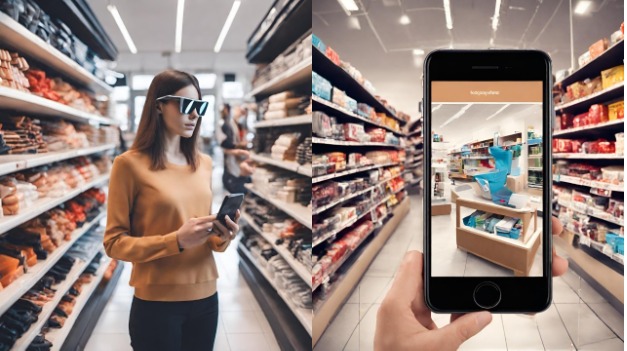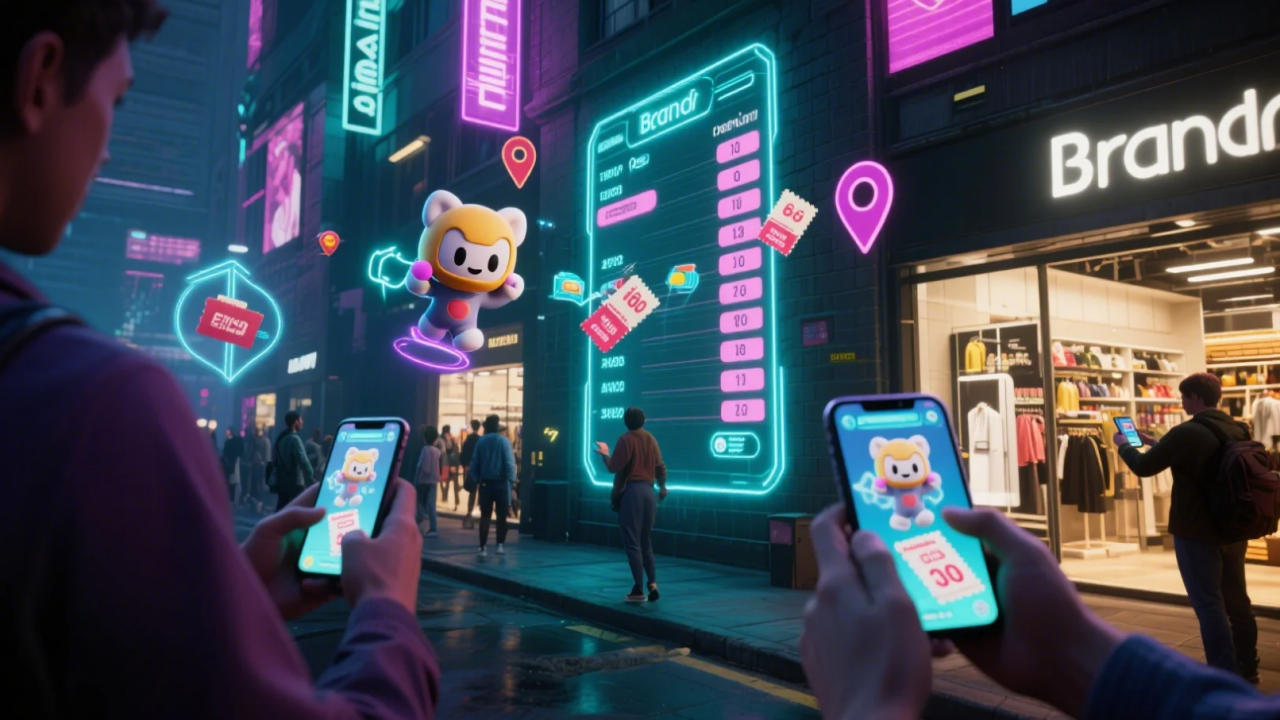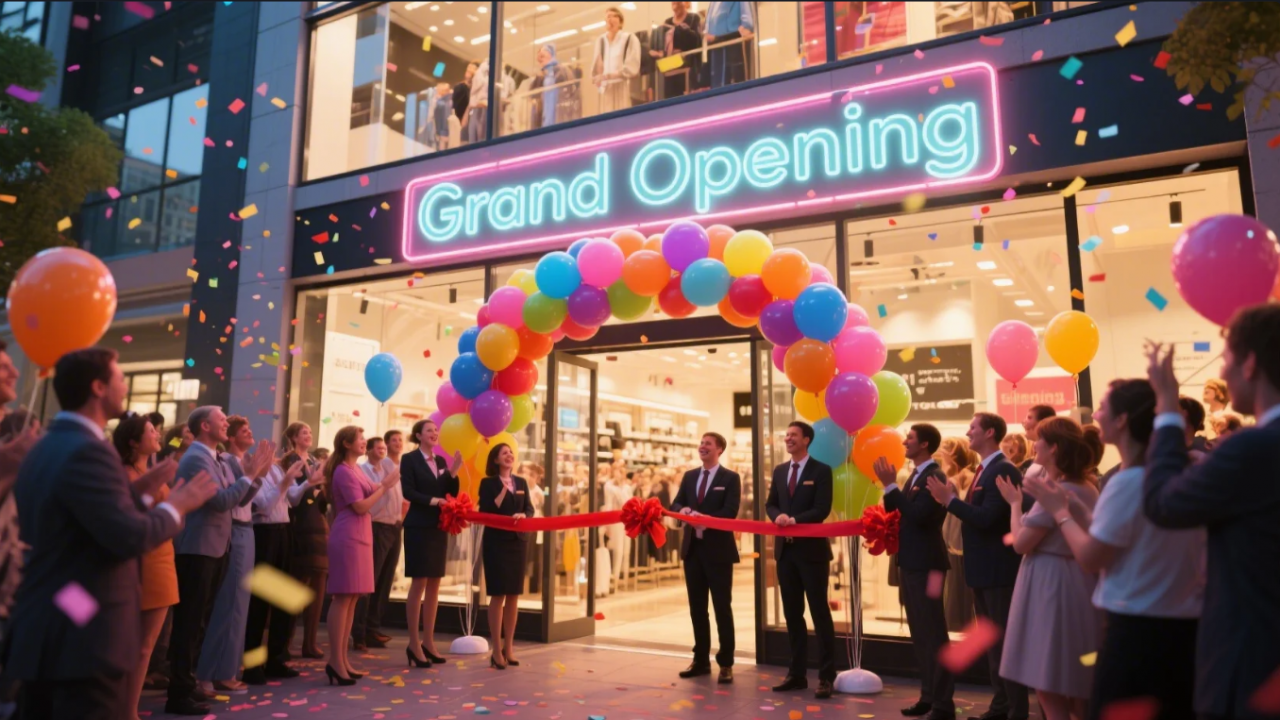Augmented reality has been previously thought to be only useful for gamers or those interested in ‘’Metaverse’’ experiences. But it has grown itself into every sector of human dealing. One major sector that augmentation has completely reshaped is the retail and shopping sector. As Gen-Z customers seek immersive shopping methods that involve interaction in their lives, augmented reality has come up to keep up with their demands.
What is AR shopping?
Augmented reality shopping is a new way to shop that merges virtual and real worlds in a smooth blend. AR has come a long way in shopping, starting from basic visual add-ons and growing into immersive real-world overlays. Now. It involves virtual try-ons, three-dimensional product previews, and interactive explorations for every kind of retail, be it an online store or a brick-and-mortar setup.
How AR Enhances Shopping?
Virtual product try-on
AR is a pertinent tool for retail marketing, especially in the beauty sector. It enables customers to virtually put on clothes or makeup and create innovative looks. They can experiment and play with different lipstick shades, check themselves having blonde hair color, or wear any jewelry piece they want to. Shopping for fashion products was never this much fun, convenient, and full of interactions.
AR-powered product visualization in real-world environments
Augmented reality tech can overlay any visuals in a space, giving a realistic preview of any scenario. People looking to buy new furniture can overlay any item into their living space to see its size and compatibility with other objects. They can design and renovate any space virtually. Augmentation also helps to check out the functionality of all kinds of products, like watches, electronic devices, and even vehicles, simply using their smartphones.
Interactive in-store AR experiences
Augmented reality can help marketers provide engaging interactions and activities in stores. Augmentation can make simple store visits interesting with the gamification of content and environment. Creating engaging AR experiences encourages customers to spend more time at stores. This leads to better engagement, foot traffic, and conversions.
Major Applications and Use Cases of AR in Shopping
E-Commerce: Virtual fitting rooms and 3D product previews
E-commerce marketers are using AR to improve their customer experience through virtual fitting rooms and 3D product previews. Buyers can virtually try on and see how clothes will fit without physically putting them on. High-quality 3D models and renderings enable them to analyze products from all views to get accurate details. This increases their confidence in the product before purchasing it and reduces the chances of product return.
AR In-store and Shopping mall navigation
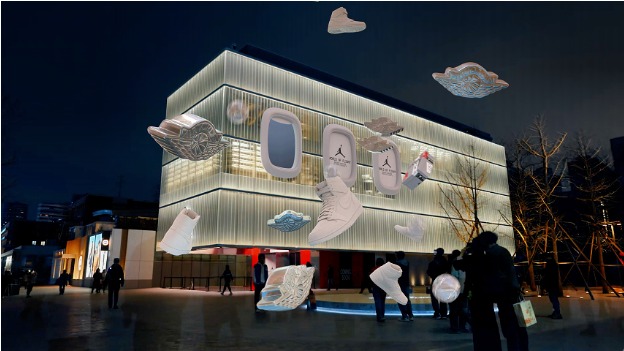
Augmented reality is making in-store navigation and shopping mall wayfinding very hassle-free. Buyers can reach their target shopping spots and areas with the help of augmented overlays and signage. Moreover, inside the stores, they can browse through shelves and find products virtually, without actually walking through different sections of stores. Such immersive explorations make shopping and complex navigation stress-free.
For example, Jordan has launched its first “World of Flight” store at Beijing Sanlitun. This exciting endeavor is full of augmented interactions, where users can enjoy cool technologies at their fingertips. Visitors can reach the store’s exterior using precise augmented signage and scan the building to experience AR wonders.
Visitors can see eye-catching visuals, like shoeboxes and basketballs soaring out of the store. Moreover, they can use dynamic AR filters and capture their cool moments, donning virtual Jordan hoodies. The store is full of interactive explorations that bring more foot traffic and engagement.
Fashion and apparel: Virtual fashion shows
Brands are using augmented reality to showcase their collections through virtual showrooms. Customers can virtually walk around and browse their offerings in an interactive format. This also excludes the need for physical inventories or setups. Products are displayed in the form of 3D models and users can interact with them in immersive scenarios.
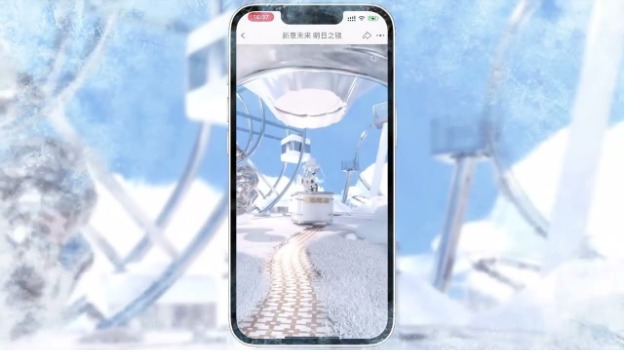
For example, Vogue and Tmall Luxury came together to deliver a thrilling digital fashion week. Picture yourself watching the newest autumn/winter collection from your couch through a digital runway. But there is more! You can also engage with brand avatars using augmented reality and snap fun pictures playing with them. It was a beautiful mix of tech and fashion with glimpses of cool possibilities in a digital age.
Retail Stores: AR navigation and interactive magic mirror displays
Brick-and-mortar retail shops can use augmented reality for in-store navigation and interactive activities. Engaging customers with gamified interactions increases customer’s interest in products. This encourages them to make more purchases and boosts sales and conversion rates greatly.
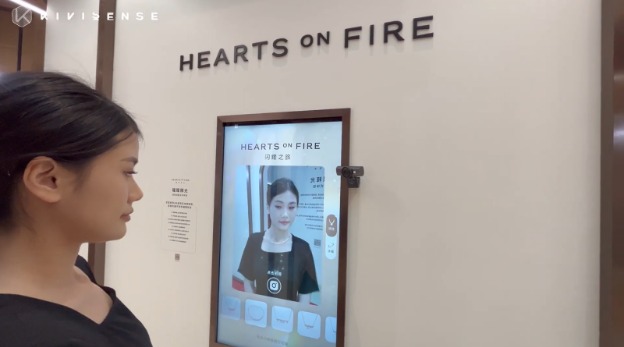
For example, Hears on Fire has introduced augmented reality magic mirrors for its exquisite diamond jewelry pieces. Visitors can select any jewelry pieces and see them superimposed on their reflections. They can visualize the cutting and placement of diamonds and see them sparkle against their skin. It is accessible through the WeChat Mini Program and is highly realistic and convenient.
Cosmetics and beauty products: Virtual make-up try-ons
Beauty retailers and brands are offering AR-powered virtual try-on solutions for online buyers. Users can apply make-up using a smartphone camera without actually putting it on the skin. They can check out different shades to find the one that suits their skin best. This digital interaction increases online engagement for retailers and satisfaction for buyers purchasing make-up products.
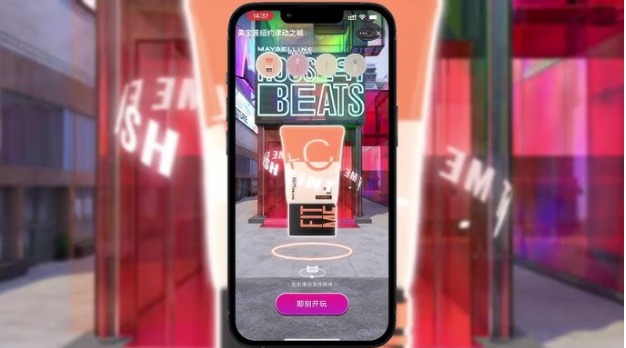
For example, Maybelline NY has introduced a gamified experience to promote the Beat Limited Edition Collection. This uses augmented reality and 3D technology to showcase its make-up products in an immersive manner. Users could try on make-up products, play engaging games, and win interesting make-up rewards from their phones. This helped the brand earn more engagement and revenues.
Furniture and home decor: Virtual furniture placement
Augmentation has also redefined parameters of home design and furniture placement. Now, you can virtually place and move any furniture model in a space with simple finger taps. You do not need to step out of your home or bring furniture items physically there. Augmentation will take charge and make every step of home decoration a breeze.
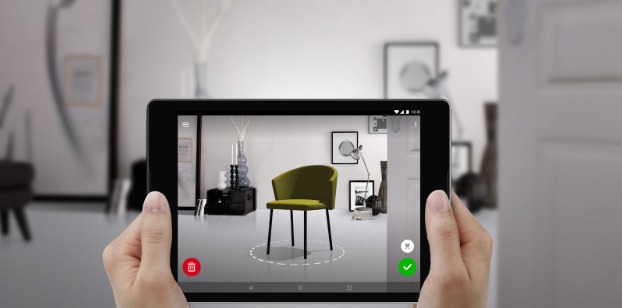
You can experience the future of AR-powered home renovation with Kivisense. Our cutting-edge AR furniture placement feature enables you to place furniture in your space at a 1:1 scale. The exclusive ‘’try-before-you-buy’’ option helps you see every detail and perfect fit of furniture sitting in your home. This gives buyers total satisfaction and leads to better conversion rates.
Grocery and FMCG: Interactive product packaging
AR-enhanced interactive packaging is being used by marketers to make grocery shopping more fun. In these times of ‘’Fast-Moving-Consumer-Goods’’, effective packaging is necessary to catch the attention of customers. Integration of AR elements in packaging makes it engaging and full of mind-blowing interactions.
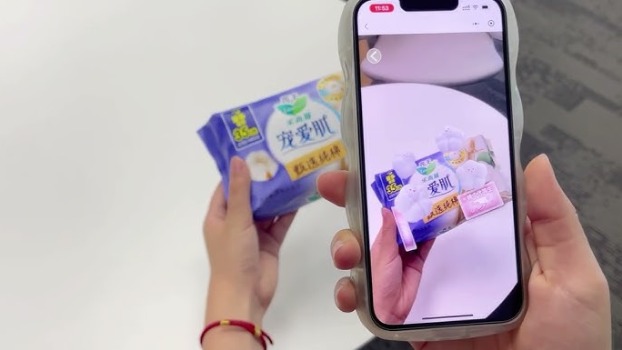
For example, Laurier x Watson has created a dynamic AR experience. Users can scan the Watson signboard with phones to give rise to a summer garden with full bloom around them. Tapping the Laurier Super Slimguard pack will unveil puffy 3D guardian cottons. These interactive packaging visuals immerse users in a ‘’Metaverse’’ of delightful experiences.
Electronic devices: Virtual product demos
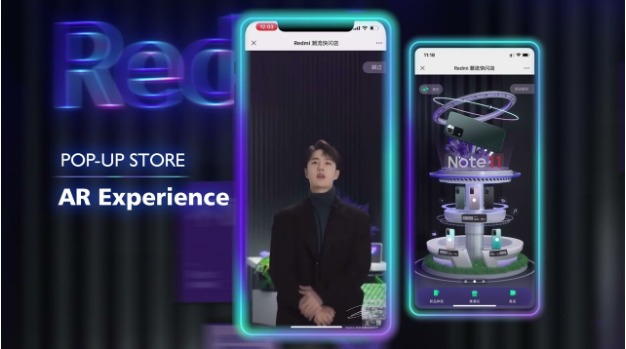
Augmented reality has made it possible to take virtual product demos of all types of electronic devices. Redmi has created a pop-up store AR experience in collaboration with Kivisense. Using this augmented-powered feature, users can virtually try on Redmi Note 11, Watch 2, and Earbuds 3, much like reality. They can check out the devices from every angle and analyze their functioning with utmost accuracy before making a purchase decision.
Benefits of AR in shopping
Immersive shopping experiences
Augmented reality makes shopping experiences more immersive, with interactions that keep users hooked. They can interact with three-dimensional models of products in augmented scenarios. This gives them a feeling of holding the objects in their hands and observing the little details with more precision. They can see themselves wearing clothes, driving vehicles, and doing activities virtually, but in a realistic and immersive environment.
Better customer engagement
Using creative augmented displays and visuals completely changes the whole vibe of a retail store. Augmentation keeps their minds engaged and they tend to return back for more such interactions. Whether at online stores or physical shops, AR boosts customer engagement with more impactful marketing approaches.
Convenient and personalized shopping experience
Customer appreciate the ability to visualize and interact with products in their own environments. And AR provides them exactly that, without any special gadgets, simply through their smartphones. Such a high degree of personalization and ease makes their shopping venture tailored to their individual needs.
More sales and less returns
Realistic AR overlays and high-precision 3D rendering enable users to see each and every detail of products. This increases customer’s confidence in their purchase. They become satisfied and, consequently, chances of product returns are reduced too. Happy customers are also a good source of word-of-mouth marketing, raising brand awareness.
Competitive edge for brands
Augmented reality helps retailers and brands set new trends in the market with innovative approaches. This enables them to get the attention of innovation-loving customers and raises the bar of immersive marketing. Offering something new attracts more traffic and drives higher engagement. It gives your brand a distinct recognition in the market and improves its reach.
Future trends of AR in shopping: What to expect?
Augmented reality, like all other technologies, is advancing each day. Its integration with artificial intelligence and other advancing Metaverse technologies like VR and MR will take retail experiences to a new level. AI-driven virtual assistants will enhance personalization through precise data analysis of user’s shopping behaviors. The use of wearable AR devices, like smart glasses, will make customer interaction with products more seamless. This shows AR will completely redefine the future of touchless interactions in the shopping sector.
Conclusion
Augmented reality has grown from mere a sci-fi concept, becoming an everyday thing for Gen-Z buyers. It helps them shop with more confidence through immersive interactions. Kivisense is offering top-notch AR, VR, and AI-based marketing solutions to help you grow your revenues. Connect with us to achieve your e-commerce and retail goals more quickly and efficiently.

